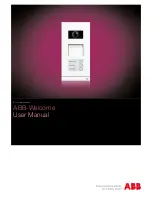
encourage sound waves to bounce
between their parallel walls.
In contrast, Infinity’s newly
designed diaphragm and slim, irreg-
ular, acoustically hip enclosure are
tailor made for one another. The
flat (well, nearly flat) diaphragm
doesn’t require much depth in
the enclosure. Even the voice coils
that propel it into motion—a
pair of long loops of thin wire
behind the driver—take up little
space. Yet they have six times more
surface-contact area than the typi-
cal round-cone/coil combo, making
for better driver control.
Try to visualize this: When a
single round voice coil pushes and
pulls a cone woofer, motion is
greatest in the center, where the
moving coil is attached, and least
at the sides. The sound waves that
these different areas generate are
out of phase with one another,
resulting in time-domain smear.
When the Cascades’ two long loop
coils push and pull the woofer, the
surface moves in a more uniform
way, and the sound waves that this
surface generates are in phase.
Using computer-aided visual-
ization, the Infinity people noticed
that some parts of the diaphragm
were reacting to the underlying
magnets in different ways. The
edges were not as well controlled.
To smooth out the differences,
they added ribs to the surface and
gussets to the sides. This strength-
ens the diaphragm and enables
it to move more like a single
piston, minimizing the uncon-
trolled motion, which is audible
at high volumes as breakup. And,
because the diaphragm more effi-
ciently dissipates heat, the coil
temperature stays low and steady,
even with higher voltages. That
e n d o w s t h e s p e a k e r s w i t h
greater dynamic range and less
dynamic compression.
> L/R Sensitivity:
84 dB from 500 Hz to 2 kHz
> Center Sensitivity:
86 dB from 500 Hz to 2 kHz
> Surround Sensitivity:
83.5 dB from 500 Hz to 2 kHz
This graph shows the quasi-anechoic (employing close-
miking of all woofers) frequency response of the Model
Seven L/R (purple trace), Model Fifteen subwoofer (blue
trace), Model Three C center channel (green trace), and
Model Five surround (red trace). All passive loudspeak-
ers were measured with grilles at a distance of 1 meter
with a 2.83-volt input and scaled for display purposes.
The Model Seven’s listening-window response (a
five-point average of axial and +/–15-degree horizon-
tal and vertical responses) me1.16/–1.47 deci-
bels from 200 hertz to 10 kilohertz. The –3-dB point
is at 100 Hz, and the –6-dB point is at 89 Hz. Imped-
ance reaches a minimum of 4.81 ohms at 314 Hz and a
phase angle of +45.23 degrees at 3.3 kHz.
The Model Three C’s listening-window response
me0.82/–3.62 dB from 200 Hz to 10 kHz. An
average of axial and +/–15-degree horizontal responses
me0.78/–3.72 dB from 200 Hz to 10 kHz. The
–3-dB point is at 247 Hz, and the –6-dB point is at
91 Hz. (Please note that, while there is no boundary-
compensation switch, the response appears to be
intentionally tapered below 500 Hz to compensate for
typical center-channel placement anomalies, which
makes some of these results appear a bit unusual.)
Impedance reaches a minimum of 4.39 ohms at 1.1 kHz
and a phase angle of +55.17 degrees at 1.8 kHz.
The Model Five’s listening-window response mea-
sures +0.92/–2.32 dB from 200 Hz to 10 kHz. The –3-dB
point is at 79 Hz, and the –6-dB point is at 71 Hz. Imped-
ance reaches a minimum of 4.79 ohms at 295 Hz and a
phase angle of +44.16 degrees at 3.3 kHz.
The Model Fifteen’s close-miked response, normal-
ized to the level at 80 Hz, indicates that the lower –3-dB
point is at 37 Hz and the –6-dB point is at 33 Hz. The
upper –3dB point is at 183 Hz using the LFE input.
—MJP
C
INFINITY CASCADE SPEAKER SYSTEM
AT A GLANCE
These listings are based on the
manufacturer’s stated specs; the HT
Labs box below indicates the gear’s
performance on our test bench.
HT Labs Measures: Infinity Cascade Speaker System
>SPEAKER:
Model Seven
Model Three C Model Five
Type:
Two-way, floorstanding
Two-way, center
Two-way, monitor/
surround
Tweeter (size in inches, type):
1, ceramic/aluminum
1, ceramic/aluminum
1, ceramic/aluminum
dome
dome
dome
Woofer (size in inches, type):
7.75 x 3.4, ceramic/
7.75 x 3.4, ceramic/
7.75 x 3.4, ceramic/
aluminum panel (1)
aluminum panel (2)
aluminum panel (1)
Nominal Impedance (ohms):
8
8
8
Recommended Amp Power (watts): 10–100 10–150
10–100
Available Finishes:
High-Gloss Black, High-
High-Gloss Black, High-
High-Gloss Black, High-
Gloss Silver, Cherry veneer Gloss Silver, Cherry veneer
Gloss Silver, Cherry veneer
Dimensions (H x W x D, inches,
on stands):
47 x 10.5 x 11.5
5.5 x 30.75 x 6
30.25 x 7.75 x 8.5
Weight ( pounds, no stands):
9
18
13.5
Price:
$799/each
$799
$699/each
>
SUBWOOFER: MODEL FIFTEEN
Connections:
Line-level stereo input and output
Enclosure Type:
Vented
Woofer (size in inches, type): 6, ceramic/aluminum cone (4)
Power Rating (watts):
800
Crossover Bypass:
No
Available Finishes:
High-Gloss Black, High-Gloss Silver, Cherry
hardwood
Dimensions (H x W x D, inches): 13 x 37 x 8.5
Weight ( pounds):
98
Price:
$1,499
Taking a Stand
Like a nation that wins the war and
loses the peace, speaker makers in
search of friendlier forms often
design good speakers and mess up
the stands. The more of them I
review, the more I dread a floor full
of pieces waiting to be assembled.
from the
test bench
INFINITY CASCADE SPEAKER SYSTEM






















